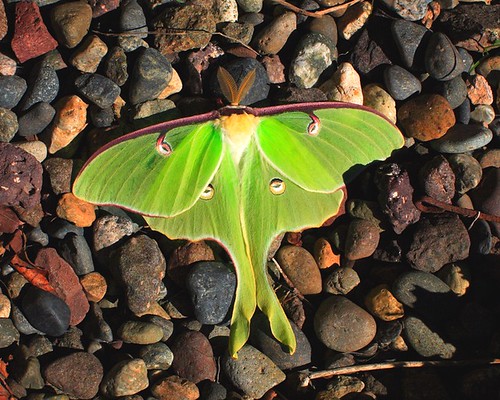In the velvety darkness of Southern summer nights, a ghostly apparition sometimes flutters past—a creature so delicate and ethereal it seems hardly of this world. The Luna moth, with its stunning lime-green wings spanning up to 4.5 inches and elegant, sweeping tails, represents one of North America’s most magnificent insects. These nocturnal beauties have captivated naturalists, artists, and casual observers alike for centuries, becoming a true icon of the American South’s rich natural heritage. Though their adult lives last barely a week, Luna moths embody transformation, beauty, and the fleeting nature of existence. As we explore the remarkable life cycle, habits, and cultural significance of this mysterious moth, we discover why Actias luna continues to inspire wonder and symbolize the magical possibilities hidden within the Southern night.
The Remarkable Anatomy of a Luna Moth
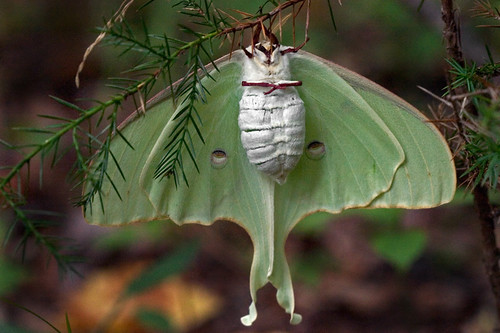
Luna moths possess a distinctive appearance that makes them immediately recognizable even to casual observers. Their most striking feature is their pale lime-green wings, which can span between 3 to 4.5 inches, making them one of North America’s largest moths. Each wing bears a prominent eyespot rimmed with colors including yellow, blue, black, and sometimes pink, which researchers believe helps confuse potential predators. Males are distinguished by their broader, more feathery antennae, which they use to detect female pheromones from astonishing distances—sometimes up to several miles. Perhaps most elegant are the long, trailing hindwing tails that stream behind them in flight, creating a distinctive silhouette against the night sky that has inspired countless artistic interpretations.
Understanding the Luna Moth’s Life Cycle
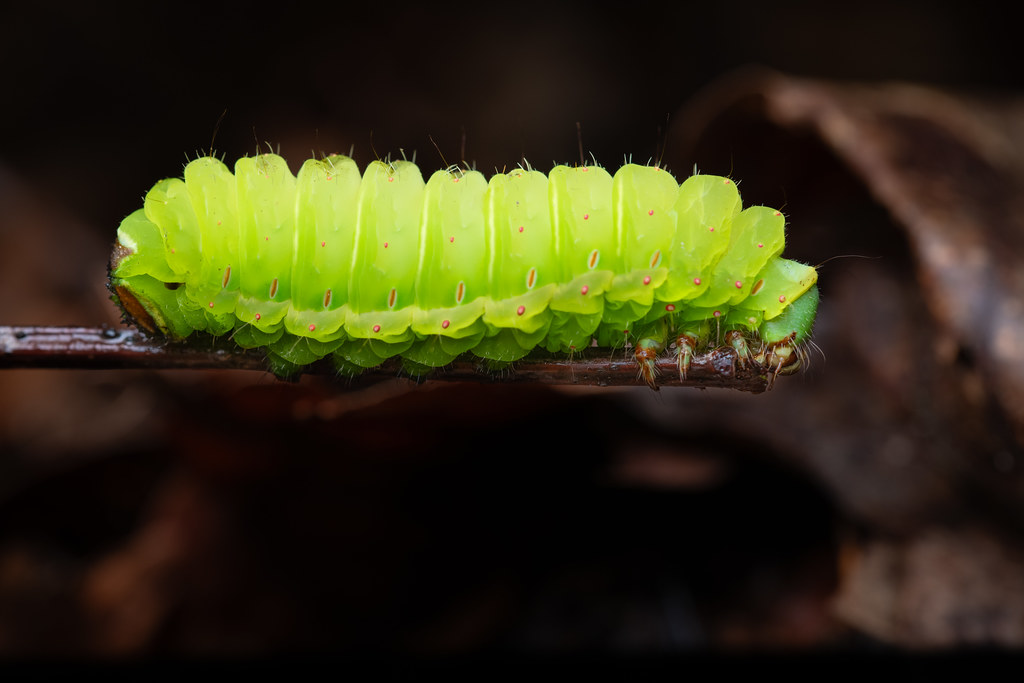
The life of a Luna moth unfolds as one of nature’s most dramatic examples of metamorphosis. Beginning as a tiny egg laid on the underside of host plant leaves, Luna caterpillars emerge hungry and grow rapidly through five instars (growth stages), reaching approximately 2.5 inches before pupation. The caterpillar phase lasts about three to four weeks, during which these vibrant green larvae consume prodigious amounts of foliage. Upon reaching maturity, the caterpillar spins a papery cocoon among leaves, where it undergoes the mysterious transformation into its adult form over approximately two weeks. The brevity of the adult Luna moth’s life—just 7 to 10 days—presents a poignant paradox: this magnificent creature, having spent months developing, emerges without functional mouthparts and cannot feed, existing solely to reproduce before its short life concludes.
Geographic Distribution Across the American South

The Luna moth has established itself as a quintessential Southern icon, though its range extends throughout eastern North America from southern Canada to Florida and westward to Texas. Within the American South, Luna moths thrive particularly well in the mixed deciduous forests that characterize states like Georgia, the Carolinas, Tennessee, and Kentucky. The warmer climate of the Deep South allows these moths to produce multiple generations annually—up to three broods in Florida—compared to just one generation in their northernmost habitats. Their abundance in Southern states has contributed significantly to their cultural integration into regional art, literature, and folklore. Historically, their distribution has fluctuated with changing forest compositions, with recent suburban tree plantings sometimes expanding their presence into new areas within their Southern range.
Nocturnal Habits and Mysterious Behaviors
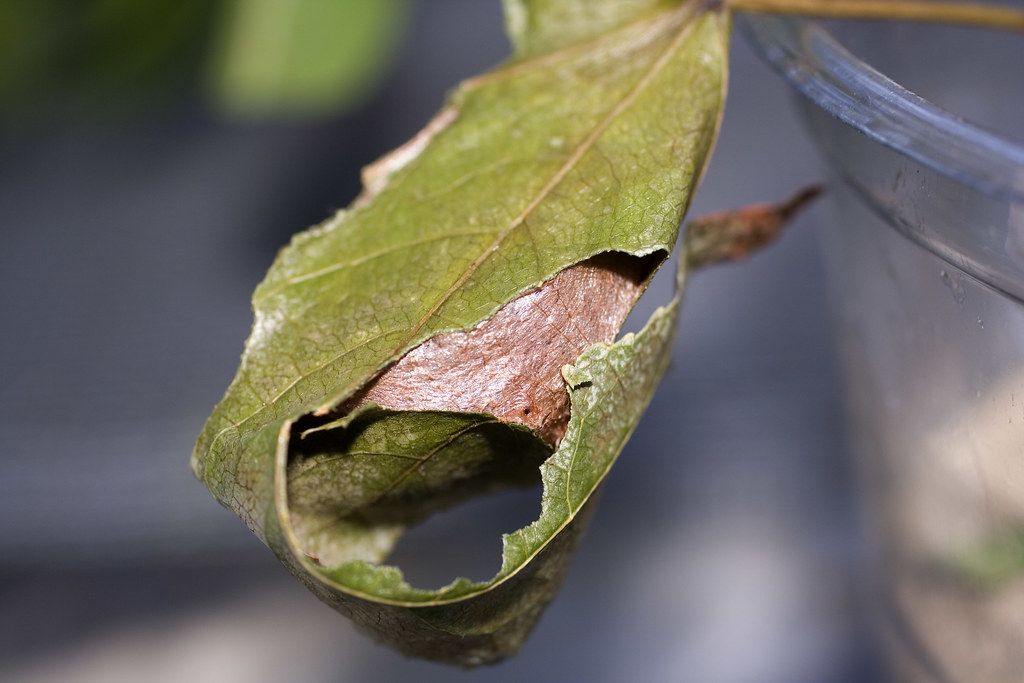
Luna moths conduct their brief adult lives almost exclusively under the cover of darkness, emerging from their cocoons in the late afternoon or evening hours. Males typically take flight first, actively searching for mates while employing their sensitive antennae to detect female pheromones that can guide them over remarkable distances. Their flight pattern is distinctive—erratic and somewhat wobbling—which helps them evade predators like bats that hunt using echolocation. Researchers have observed that Luna moths are most active during the first few hours after sunset and again before dawn, typically resting with wings spread flat against tree trunks or leaves during daylight hours. Interestingly, these moths demonstrate phototaxis (attraction to light), which frequently brings them to porch lights and windows, creating those magical encounters with humans that have cemented their place in Southern folklore.
Host Plants and Habitat Requirements
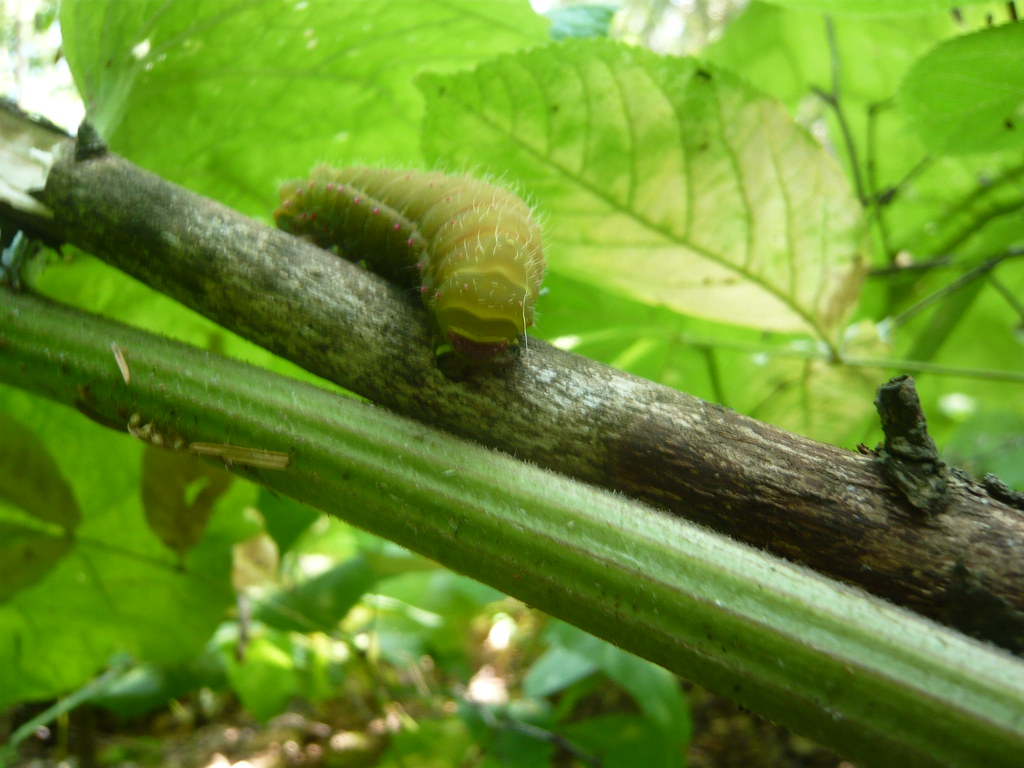
Luna moths demonstrate a strong preference for specific host plants that support both their caterpillar and adult stages. Their larvae feed primarily on the foliage of deciduous hardwood trees, with particular favorites including hickory, walnut, sweetgum, persimmon, and birch—trees abundant throughout the American South. This botanical relationship has evolved over millennia, with Luna caterpillars developing specialized digestive systems capable of processing the chemical compounds present in these specific leaves. Adult Luna moths, though unable to feed, still require appropriate habitat for resting during daylight hours and suitable surfaces for females to deposit eggs. The ideal Luna moth habitat combines mature hardwood forests with open areas for flight and mating, explaining their particular abundance in the mixed landscape of the Southern states with their patchwork of woodlands, agricultural areas, and suburban developments.
The Mystery of the Luna Moth’s Tails
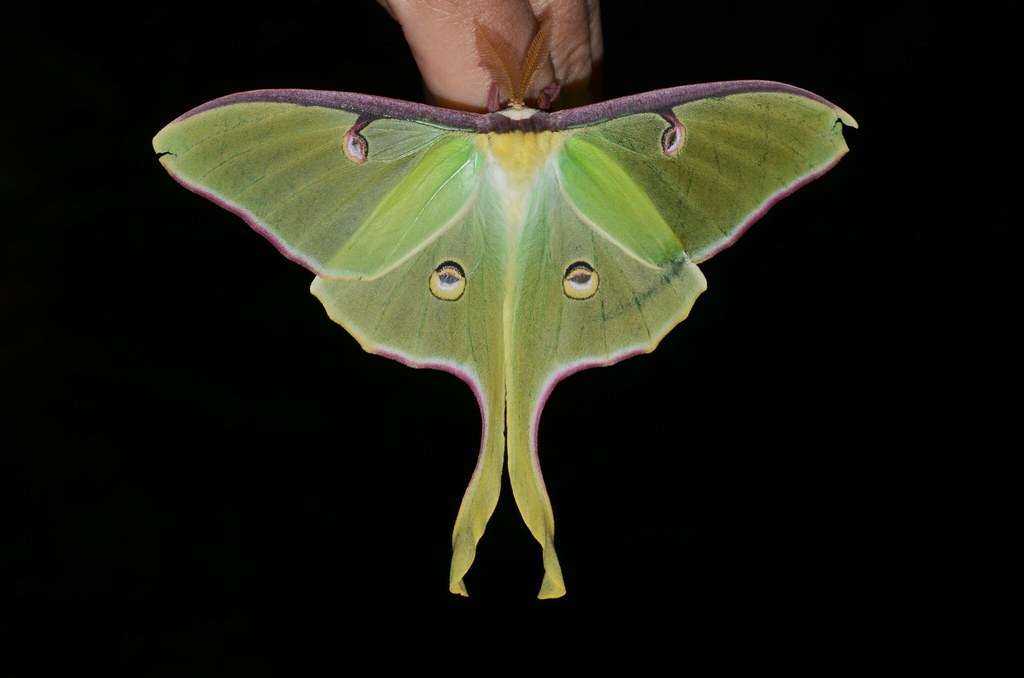
The distinctive trailing hindwing tails of the Luna moth have long fascinated both scientists and nature enthusiasts, representing one of evolution’s more elegant adaptations. Recent research published in the Journal of Evolutionary Biology suggests these tails serve a critical survival function by acting as acoustic decoys against bat predation. When echolocating bats target Luna moths, the fluttering tails create confusing sound patterns that can misdirect attacks away from the moth’s vital body. High-speed photography has revealed that Luna moths often survive encounters with bats precisely because the predator strikes these expendable tails instead of the moth’s body. The length and movement of these tails vary slightly across different geographic populations, with Southern Luna moths typically displaying longer, more pronounced tails than their northern counterparts—possibly reflecting regional variations in predator populations and environmental conditions.
Cultural Significance in Southern Art and Literature

The Luna moth has transcended its biological role to become a powerful cultural symbol throughout the American South. In Southern literature, authors from Eudora Welty to Barbara Kingsolver have employed the Luna moth as a metaphor for transformation, beauty, and the ephemeral nature of life. Their ghostly presence appears in countless Southern paintings, particularly in the folk art tradition, where they often symbolize the mysterious beauty of Southern nights. Textile artists across Appalachia and the Gulf states have incorporated Luna moth motifs into quilts and fabric arts for generations, passing down patterns that capture their distinctive silhouette. Perhaps most significantly, the Luna moth has become a spiritual symbol in various Southern traditions, representing the soul’s journey and transformation—their brief but spectacular adult lives serving as a poignant reminder of beauty’s transient nature, a theme deeply resonant in Southern cultural expressions.
Conservation Challenges Facing Luna Moths

Despite their iconic status, Luna moths face significant conservation challenges in the modern South. Habitat fragmentation ranks among their greatest threats, as development continues to divide the continuous forest habitats they require for successful reproduction and survival. Light pollution presents another serious concern, as artificial lighting can disrupt their mating patterns and navigation, often exhausting these short-lived creatures before they can reproduce. Pesticide use in both agricultural and suburban settings has decimated local populations, with broad-spectrum insecticides failing to discriminate between pest species and beneficial natives like the Luna moth. Climate change introduces additional stressors, potentially disrupting the synchronization between moth emergence and host plant availability, especially in the South where rising temperatures are altering seasonal patterns more dramatically than in northern regions.
Distinguishing Luna Moths from Similar Species
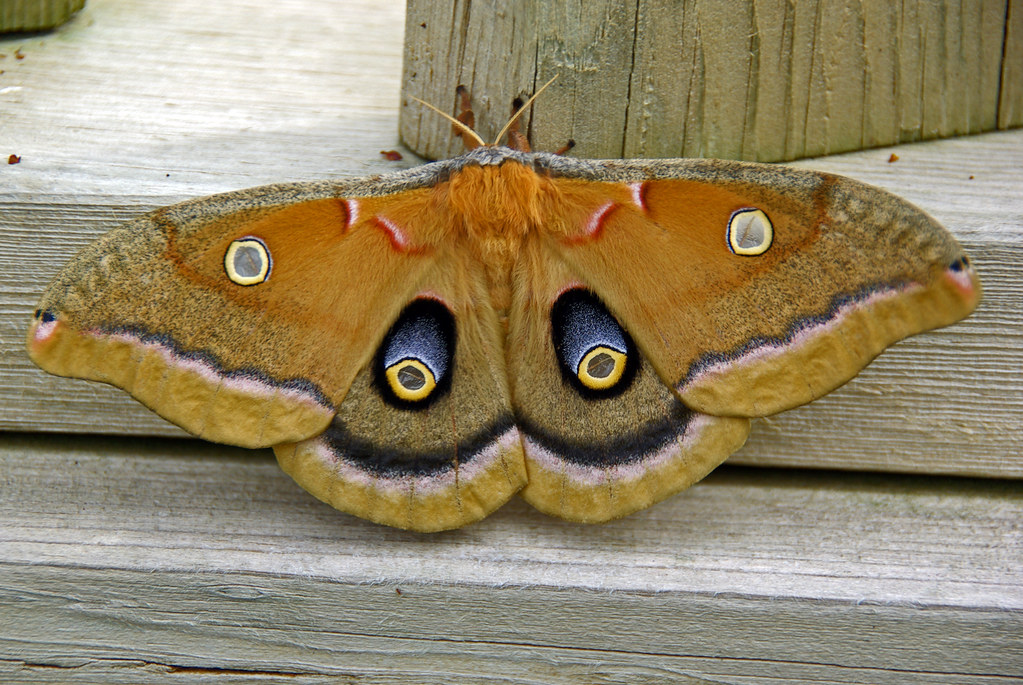
While the Luna moth’s appearance seems unmistakable, several related species can cause confusion for casual observers. The Polyphemus moth (Antheraea polyphemus), another Southern giant silk moth, shares the Luna’s impressive size but displays distinctive eyespots and lacks the characteristic tails. The Promethea moth (Callosamia promethea) exhibits sexual dimorphism with males resembling Luna moths in flight silhouette, though closer inspection reveals their darker coloration and different wing patterns. Perhaps most frequently confused with Luna moths are the Actias luna selene and other Asian Actias species now sometimes found in North America due to accidental introductions or the butterfly trade, though these typically show subtle differences in wing shape and eyespot patterning. For Southern naturalists, learning these distinctions enriches nighttime moth-watching, with the true Luna’s lime-green coloration and elegant proportions standing as the quintessential benchmark against which other large moths are compared.
Seasonal Patterns and Brood Variations
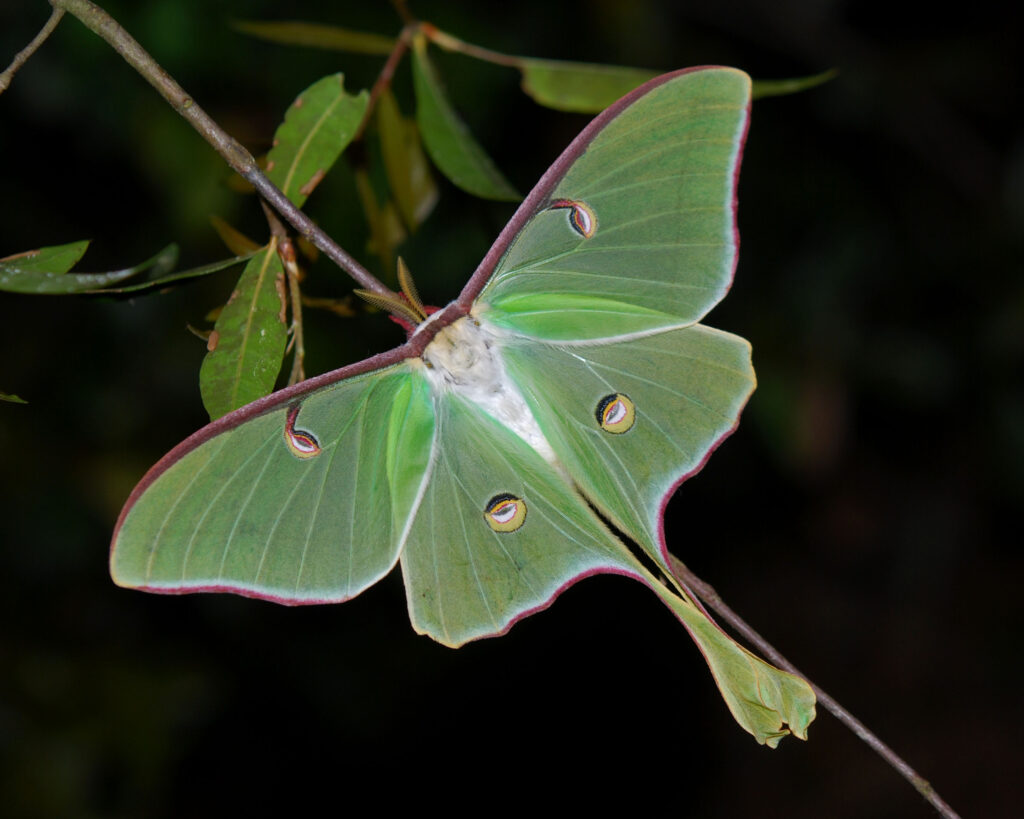
Luna moths demonstrate fascinating seasonal patterns that vary significantly across their Southern range. In the Deep South, particularly in states like Florida, Louisiana, and southern Texas, Luna moths can produce up to three generations annually, with adults emerging in March, June, and August-September. Moving northward through the Carolinas, Tennessee, and Kentucky, this pattern typically reduces to two generations, with peaks in May and August. These generational differences aren’t merely matters of timing—they actually produce physical variations in the moths themselves. Spring brood Luna moths in the South often display a more vibrant, deeper green coloration with pronounced pink or purple wing margins, while summer broods tend toward a paler, more yellowish-green with reduced marking intensity. Researchers believe these seasonal variations represent adaptations to different predator populations and environmental conditions present during each emergence period.
Attracting Luna Moths to Southern Gardens
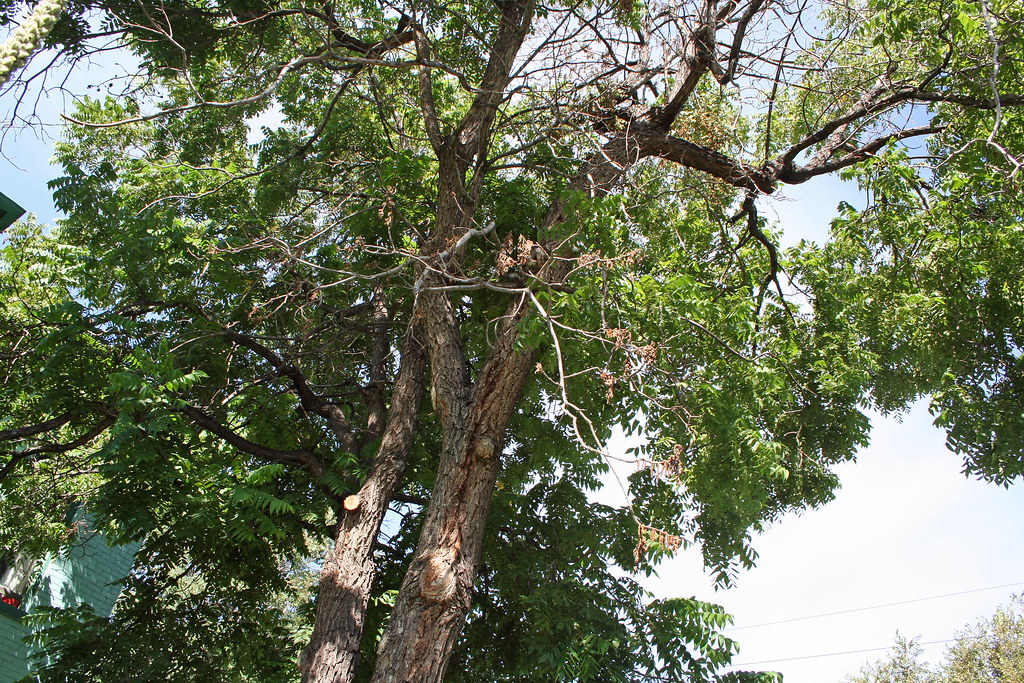
Creating a Luna moth-friendly garden has become increasingly popular among Southern homeowners seeking to support these magnificent insects. The foundation of any Luna moth habitat begins with planting appropriate host trees—sweetgum, black walnut, persimmon, and hickory represent excellent choices that support both larvae and provide resting places for adults. Contrary to popular belief, Luna moths don’t benefit from butterfly bushes or nectar plants since adults cannot feed, making host plant selection all the more critical for their reproduction cycle. Reducing outdoor lighting during their active seasons (especially between May and August in most Southern states) significantly increases your chances of attracting these nocturnal visitors by preventing disruption to their natural behaviors. Perhaps most importantly, maintaining a pesticide-free garden creates a safe haven for these sensitive creatures, whose caterpillars are particularly vulnerable to common lawn and garden chemicals widely used throughout the South.
Folklore and Superstitions Surrounding the Luna Moth

Throughout the American South, Luna moths have accumulated a rich tapestry of folklore and superstitions that reflect their mysterious nocturnal nature. In certain Appalachian communities, the appearance of a Luna moth against a window is traditionally interpreted as a departed loved one making contact, with their brief visit mirroring the fleeting nature of life itself. Along the Gulf Coast, particularly in communities with French and Creole influences, Luna moths have been associated with good fortune in love when they appear during courtship or marriage celebrations. Some Southern folk traditions hold that finding a perfect, undamaged Luna moth wing brings the finder protection on nighttime journeys. Perhaps most widespread is the belief that harming a Luna moth brings bad luck, a superstition that has inadvertently served conservation purposes by encouraging generations of Southerners to admire rather than capture these ethereal creatures, contributing to their enduring presence in Southern ecosystems despite numerous environmental challenges.
Conclusion

The Luna moth embodies the ephemeral beauty and enduring mystery of Southern summer nights. Through their brief yet spectacular lives, these magnificent insects connect us to natural cycles of transformation and renewal that have shaped Southern landscapes for millennia. As development, light pollution, and climate change increasingly threaten their populations, the cultural significance of Luna moths gains new importance—reminding us what stands to be lost if we fail to protect the delicate ecological balances that sustain them. For those fortunate enough to witness a Luna moth’s ghostly green wings illuminated by moonlight or discover one resting in quiet splendor against a morning tree trunk, the experience offers a moment of connection with something larger than ourselves—a living embodiment of the South’s natural heritage that continues to inspire wonder, art, and conservation efforts across generations.

